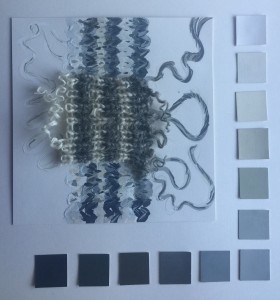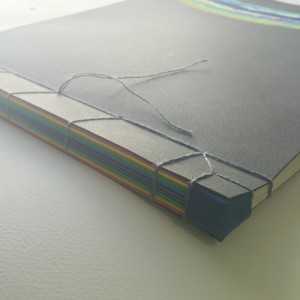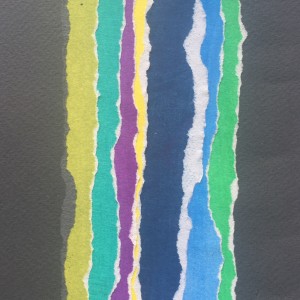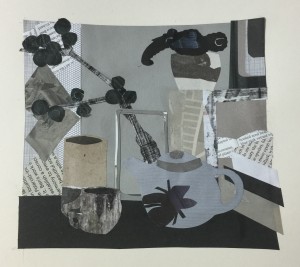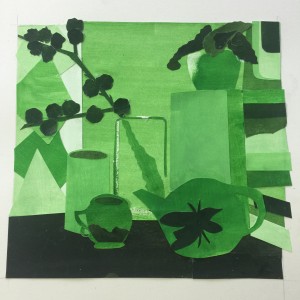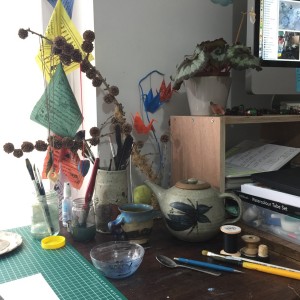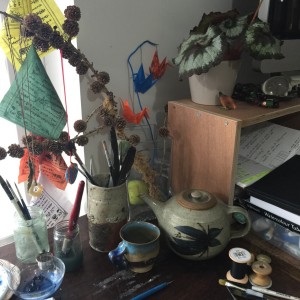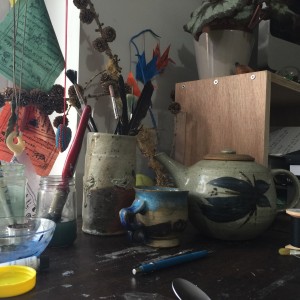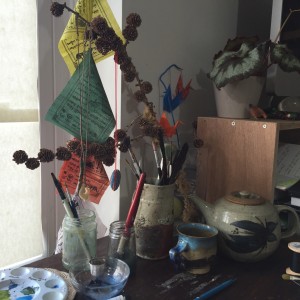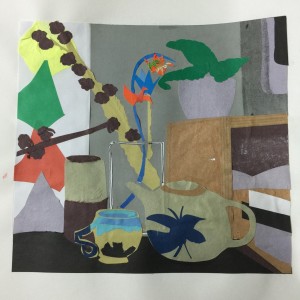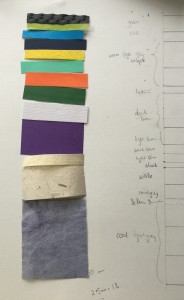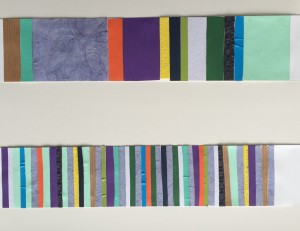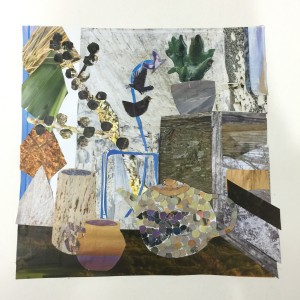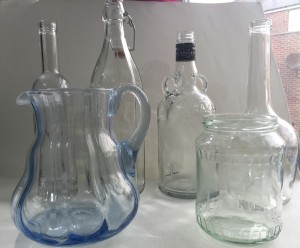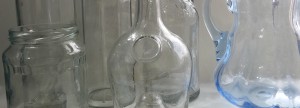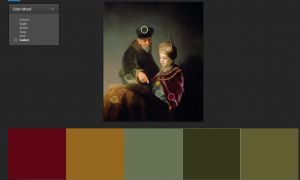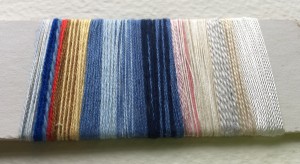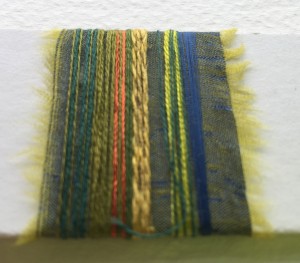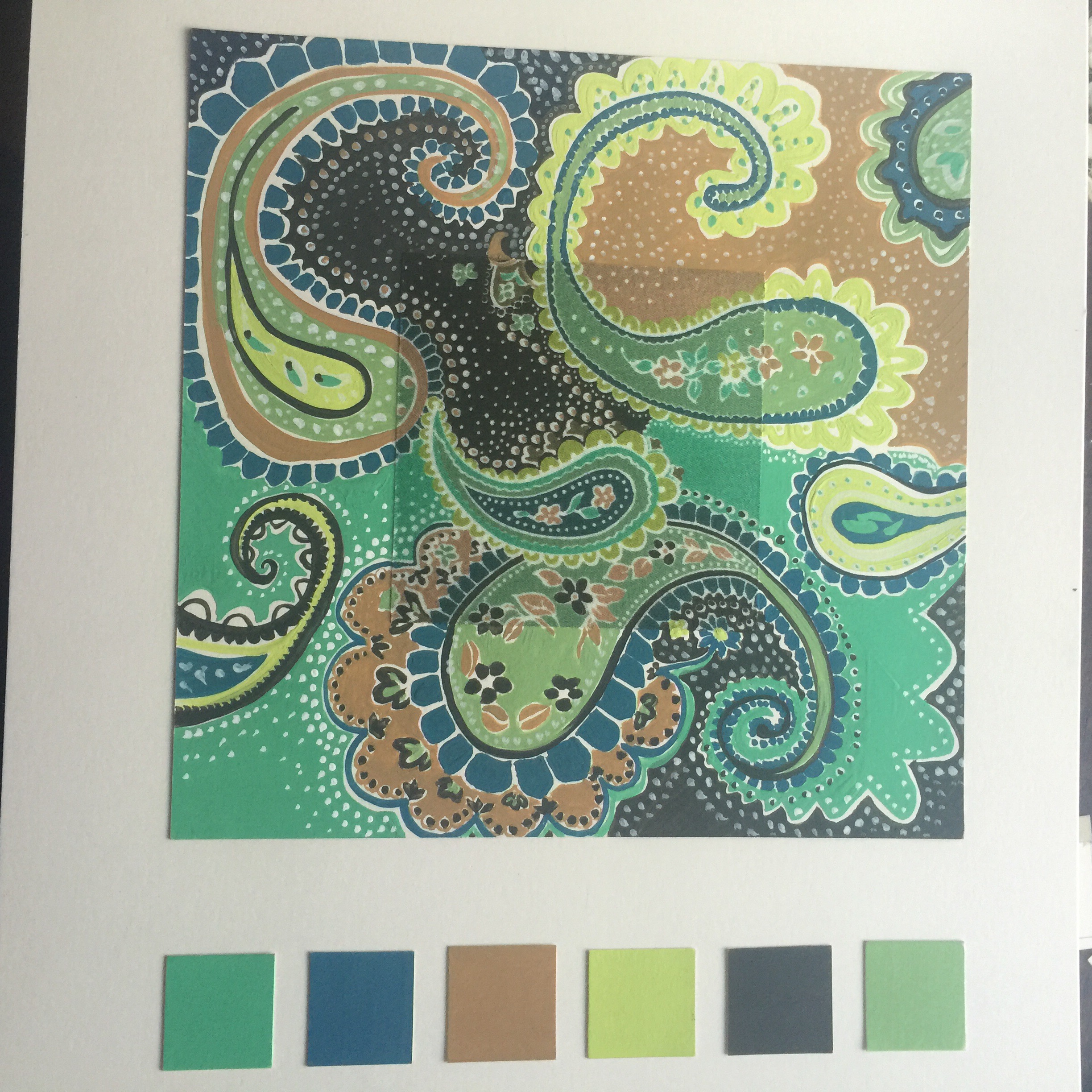Feedback on assignment 3 colour studies – Overall Comments
Linda it was lovely talking to you this morning during your Skype tutorial. In this feedback document I will outline the points that came up in our conversation so you have a record of them. Overall this was a well-executed assignment, organised and beautifully presented. The main area of improvement you can make during your next assignment is to make better use of your online learning log. Below I have listed the points where I suggest you develop your work.
This was the first time that I opted for a Skype tutorial. I don’t even like phones much so the idea of a video conversation was way to scary! However my irrational fear was as unfounded as I expected it to be, and I highly recommend Skype as a tutorial format. It was really lovely to meet Rebecca and put a face to the wise words from previous assessments, the OCA course whilst being fantastic in so many ways, is quite isolated and having a conversation about my work was really informative. I think that it is really valuable that the feedback was a conversation that enabled some things to be elaborated on, and others to be skimmed according to questions that arose. I was able to take notes as we were speaking so I now have a detailed list of pointers to work on and a much clearer picture of how my work is progressing – compared to how I may have interpreted a written feedback.
I also have a greater feeling of communicating with an audience than I had before which I think will be really helpful.
Assignment 2 and 4 Assessment potential
I understand your aim is to go for the Textiles Degree and that you plan to submit your work for assessment at the end of this course. From the work you have shown in this assignment, providing you commit yourself to the course, I believe you have the potential to pass at assessment. In order to meet all the assessment criteria, there are certain areas you will need to focus on, which I will outline in my feedback.
Feedback on assignment
Demonstration of technical and Visual Skills, Quality of Outcome, Demonstration of Creativity
Your colour book was a pleasure to look at, expressing the depth of your study and your engagement in exploring colour. Well done. The only thing I think you should have done differently was to create your own painted strips for the front cover. This would demonstrate your skill in all areas of the book.
Rebecca was very kind about my work and presentation, some words I noted down were; coherent, sense of adventure, good risk taking – this particularly about my wool colour analysis (Somehow she knew that I had second thoughts about how I approached the monochrome piece!)
I used Inktense to colour paper for the stripes on the front of my book, choosing a rainbow theme but opting for slightly off primary and secondary colours. I used the whole selection to wrap the spine edges of the pages and chose the front colours with a nod to the idea of ‘unusual’ colour combinations.
This was very much with the feeling of “I must get this project in the post” and I did not explain or evidence my choice in my workbook or blog. This links really clearly to Rebecca’s main point for improvement. My blog (covered a little later…)
The workbook you produced for this assignment where you go through the projects set is a lovely working document of your thoughts and experiences as you progressed. The layout and your use of annotation make this a useful record of your learning and demonstrates your skill in areas such as visual skills, quality of outcome and creativity. I suggest you continue to work in this way developing and changing as you move through your studies. Remember to either remove or fill the empty pages because they look a bit suspect at assessment.
Having made the Colour Book I think the best way forward with sketch books is to bind my own, It is quite quick to do and an enjoyable process, it will give a sense of coherence and will overcome the issue of empty pages, I will be able to change the paper I use according to content and I will no longer be intimidated by the new book syndrome!
It was interesting that Rebecca was more effusive about my work book than my colour book (though this got lovely feedback) the course emphasis at this stage is very much about the journey, things that I’m doing well are recording and annotating ideas and concepts in my work book, It isn’t a lovely sketch book of beautiful drawings but very much a recording of my work process that evidences thinking.
Research
Context, reflective thinking, critical thinking, analysis
As I said you don’t need to work through the Critical Thinking Skills book I recommended. Dip into it every now and then, making notes in the margins and reflecting on what you learn in your learning log. Continue to discuss the research material you find and its value to your studies. Remember to elaborate on your on your thoughts, for example why you think something looks surreal. Think about accumulating words and language that you can use to describe what you see, feel and learn from looking at someone else’s work.
Marginalia! Rebecca gave me this marvellous new word (annotations in the margin of a book) and the idea to then photograph the section of text for my blog, this can in turn be reflected on and explained more fully.
Using photographs of sketch books, gallery notes, mind maps etc will be an excellent way of more quickly recording information and thinking on my blog. Quite possibly the most useful part outcome of the Skype tutorial, and this way of enabling me to enhance quantity and quality of blog posts probably wouldn’t have come about without chatting.
Learning Logs or Blogs/Critical essays
Context, reflective thinking, critical thinking, analysis
I suggest you spend some time during the next assignment developing your learning log. Think about adding more information in the form of images and annotation much in the same way as your workbook. Write freely and with expression, commenting on your experiences and thoughts. Remember this is the academic side of your studies, where you can demonstrate your thinking skills – such as analysis and synthesis.
My blog is currently a little thin on information. I now understand more of the importance of the learning log (blog) and what the assessors are going to be looking for. My research is evident in my work but not so in my blog. I have definitely been treating the blog wrongly, considering it as quite a formal communication, a pristine sort of document. I guess because of the open nature of it. It is quite a vulnerable feeling making my thinking public, but important that I embrace this. I was reminded that the Learning Log doesn’t have to be an electronic blog – it could be a paper based document but I will persevere with the blog as it is infinitely more searchable, I can hope that my typing improves and becomes less of a barrier to what I am trying to say. Rebecca gave me a lot of pointers about how my blog can be improved;
- Using different types of writing – formal, streams of conciousness, bullet points, annotated drawings, photos of notes. Be more experimental with communication.
- Develop an artistic thesaurus. Be creative with self expression.
- Evidence thinking, annotate the annotations, refer to research – explain the impact of the research, argue with it and express my own opinions.
- Reflect on reflections to give an extra layer of understanding.
- Have discussions with myself about what I did, how I did it, why I did it that way.
- Make connections with artists.
- Explain how it fits in with the course.
- What could happen next?
- Think about thinking.
- Interweave the blog with sketchbooks and note books – it is all one!
Thank you for the feedback Rebecca , I am really looking forward to moving on.
Pointers for the next assignment
- Reflect on this feedback in your learning log
- Maintain your excellent working practices
- Develop your learning log
- Continue to use your skill with colour throughout your studies
Please inform me of how you would like your feedback for the next assignment. Written or video/audio
Well done Linda, I look forward to your next assignment.
| Tutor name | Rebecca Fairley |
| Date | 17th March 2016 |
| Next assignment due | 25th April 2016 |
